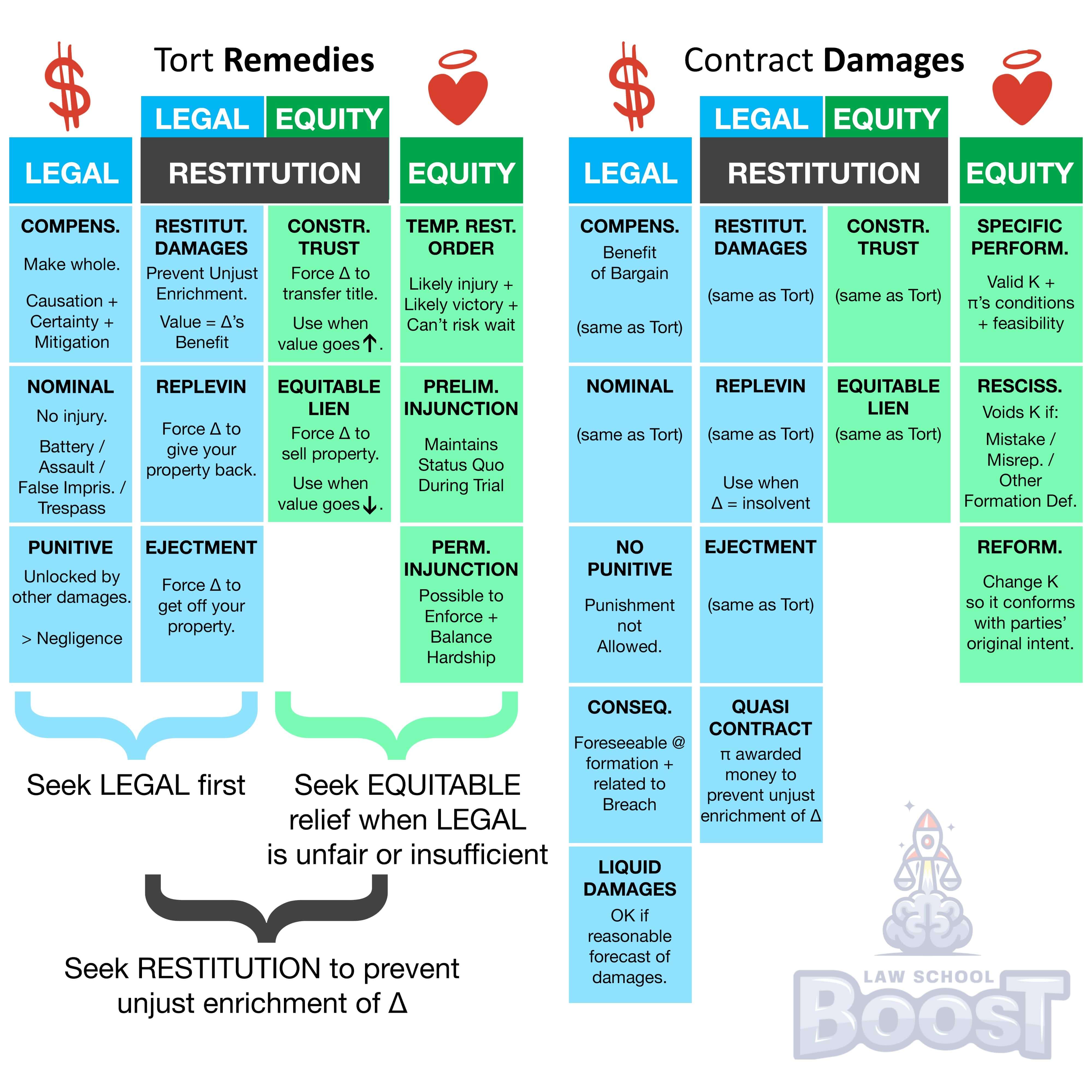🏥
Remedies • Tort - Legal Remedies
REM#004
Legal Definition
The defendant's wrong must have proximately caused the plaintiff's damages. In other words, plaintiff's damages must have been foreseeable at the time of the tortious act.
Plain English Explanation
For us to hold someone legally liable for something they did, we have to be completely sure (well, almost) that they deserve to pay compensatory damages. How do we do that? We show that the action was the proximate cause of the injury, which means two things: First, the action was the reason the injury happened. That one's usually easy to prove. After all, it's hard to get a broken nose without something hitting you in the face. Second, the injury should have been foreseeable, meaning the defendant should have known they’d cause an injury when they did the action in question. It’s not enough to show that they hurt someone; we have to show that it's reasonable for them to have known an injury would occur and they did it anyway––that's foreseeability. Then we can make them pay up!
Hypothetical
Hypo 1: Bob just got a new shipment of fireworks from an illegal website (different tort involved there probably) and, in his excitement, decides to set off a small one in his living room. As he sets it off, his roommate Sam rounds the corner and gets hit right in the face with the firework, burning off his eyebrows. Result: Bob didn't mean to hurt anyone, but it was foreseeable that his irresponsible act could have hurt someone. He could have started a fire, launched it out the window and hit someone, any number of things. Since we know that Bob's action caused Sam's injury and Bob should have known (because it was foreseeable) that his actions could hurt someone. Thus, he should be liable for damages.
Hypo 2: Amy got a sick pair of nunchucks as a gift from Bob and she's always wanted to own a pair. She decides to practice with them and goes into her room with the door closed. As she's in there discovering her true shaolin potential, her roommate Jill opens her door to ask Amy a question and gets whacked in the face. Result: While Amy swinging her nunchucks was the proximate cause of Jill's fresh pair of black eyes, she couldn't have foreseen that injury. We know she took fair precautions––she went to her room to practice alone––so this case fails the foreseeability test and Amy shouldn't be held liable. That being said, on an exam, it would be wise to try to argue both sides of issues like these, as some may say that nunchucks are never appropriate inside of the house — mostly my Mom... my Mom would say that.
Hypo 2: Amy got a sick pair of nunchucks as a gift from Bob and she's always wanted to own a pair. She decides to practice with them and goes into her room with the door closed. As she's in there discovering her true shaolin potential, her roommate Jill opens her door to ask Amy a question and gets whacked in the face. Result: While Amy swinging her nunchucks was the proximate cause of Jill's fresh pair of black eyes, she couldn't have foreseen that injury. We know she took fair precautions––she went to her room to practice alone––so this case fails the foreseeability test and Amy shouldn't be held liable. That being said, on an exam, it would be wise to try to argue both sides of issues like these, as some may say that nunchucks are never appropriate inside of the house — mostly my Mom... my Mom would say that.
Visual Aids


Related Concepts
In assessing compensatory damages for legal remedies in tort, how important is certainty and how is it assessed?
In assessing compensatory damages for legal remedies in tort, how must the judgment be paid?
In assessing compensatory damages for legal remedies in tort, what are general damages?
In assessing compensatory damages for legal remedies in tort, what are special damages?
In assessing compensatory damages for legal remedies in tort, what is unavoidability?
In assessing compensatory damages, what is causation?
In assessing legal remedies in tort, what are compensatory damages?
What are legal remedies in tort?
What are nominal damages for legal remedies in tort and what suits are they applicable to?
What are punitive damages for legal remedies in tort, how can a plaintiff get them, and what are their limitations?


